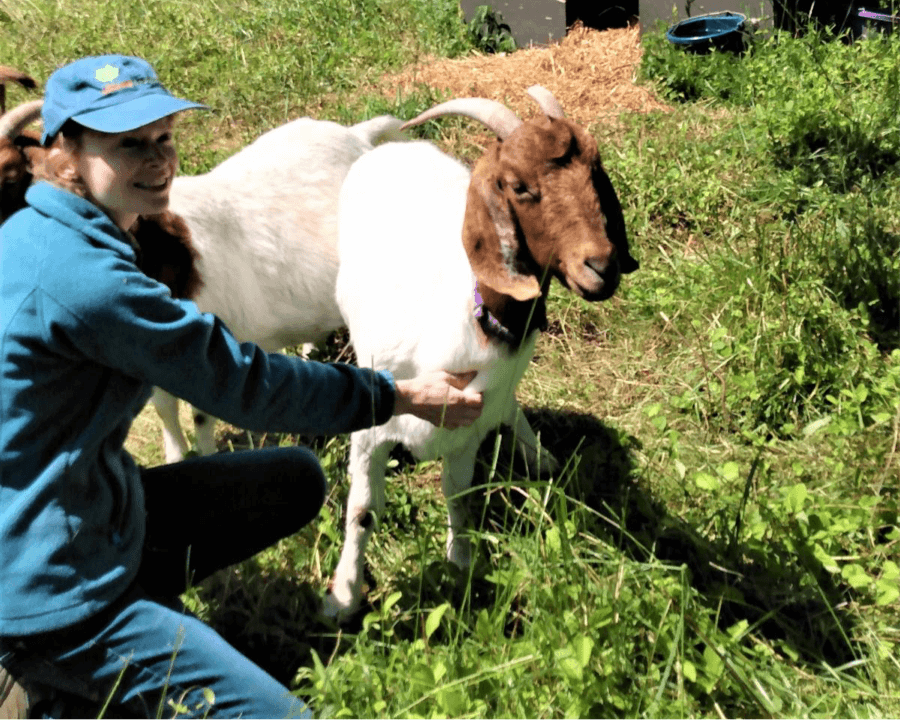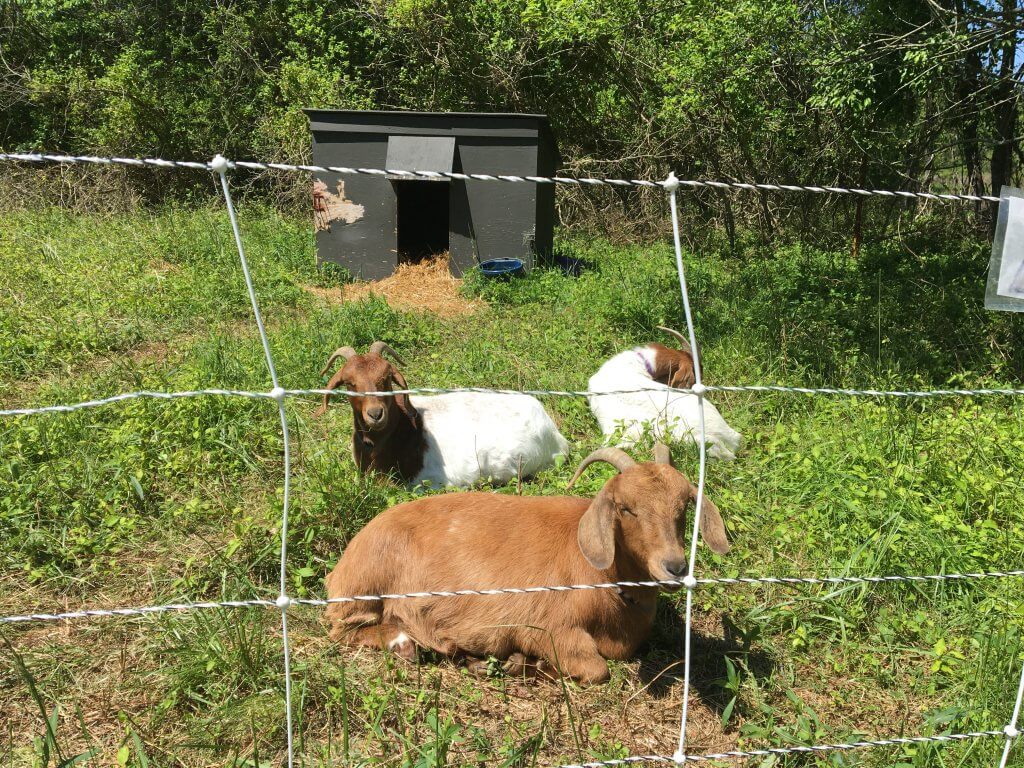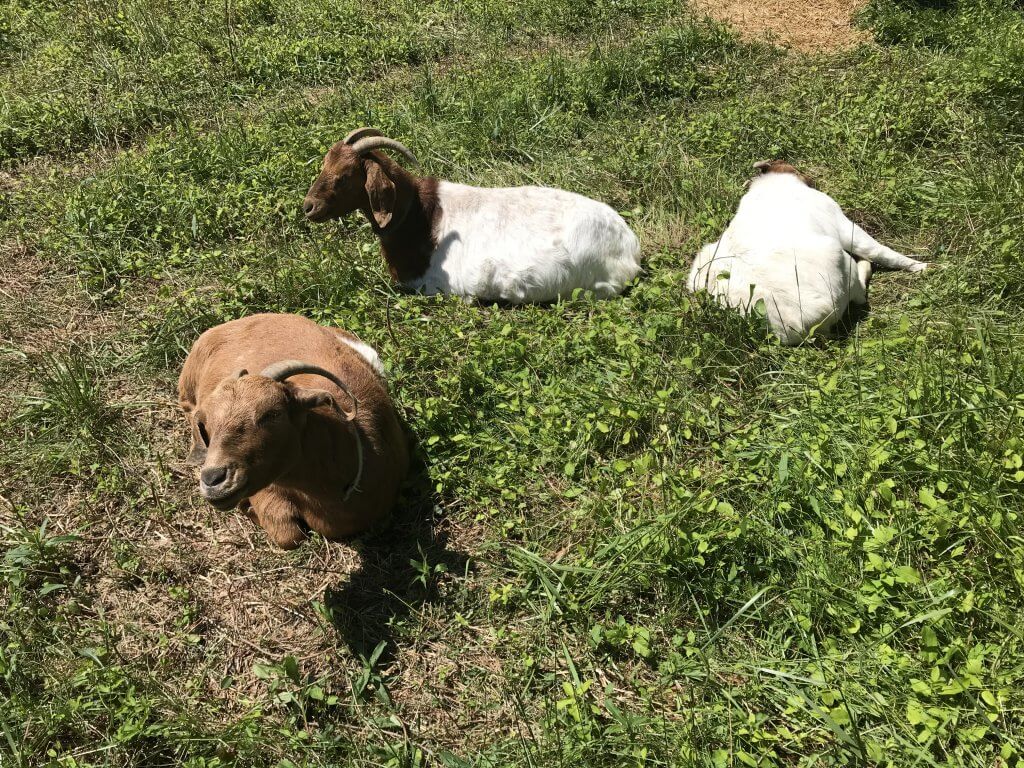I don’t remember much about The Taming of the Shrew other than the title, and it’s this title that comes to mind when I think about my favorite Arboretum goat, Tiarella. She is my favorite primarily because she’s always delighted to see me, but this wasn’t always the case.
When she first appeared on the scene, Tiarella was large and surly, with a tendency to butt heads. I pegged her as a bully goat and saved my sweetgum leaves for shy Rosie. Even after a brush with a parasite-ridden snail caused permanent neurological problems that manifested in a diagonal gait and the tendency to lurch to one side, Tiarella dominated the herd through sheer obstinacy.

I began softening toward Little T (an ironic nickname, to be sure) the first time I helped move the goats to their winter enclosure. Four of us held sturdy dog leashes, and somehow Tiarella wound up on the end of mine. Before I knew it, the two of us — one small lady and one very large goat — were flying across the South Meadow. It occurred to me that I had rarely been less in control of a situation, but we made it to our destination in one piece… and in record time.
Starting with that day, my relationship with Tiarella began to improve, especially once I began volunteering for Saturday goat duty. Now when I enter the pen, she trots up (diagonally) for rubs and ear scratches. Sometimes she’ll even lean her large flank against me. I’d like to take credit for the change, but it’s probably the daily affection she receives from Land Steward Kathy Thornton and Facilities Coordinator Michael Micriotti that’s transformed her from a big bully to a big softy.

We depend on Tiarella and our other three goats for targeted grazing of weeds and invasive plants. Repeated grazing by goats will kill most woody plants without the need for herbicides. Goats can also clear areas quickly to provide access for other control methods. It’s uncertain whether our small herd truly earns its keep, but there’s no question that the goats have earned a place in our hearts.

Adkins Arboretum is a 400-acre native garden and preserve that serves as a model for land management, engaging all ages in conservation and restoration of the Chesapeake region’s native landscapes through education, recreation, the arts, and community events.

